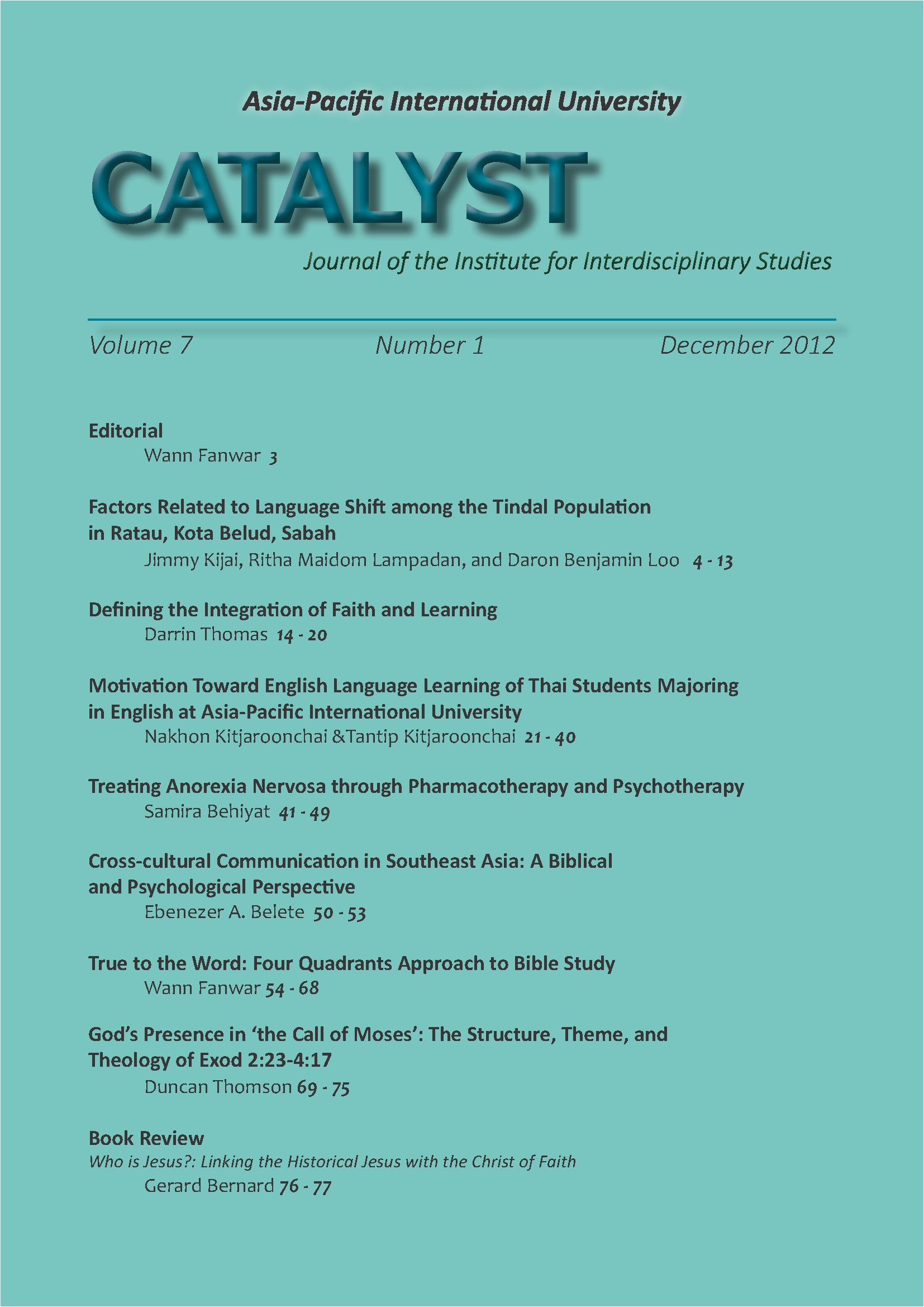True to the Word: Four Quadrants Approach to Bible Study
Main Article Content
Abstract
An overriding concern of those who read and study the Bible is, ‘What is the most effective way to study the Bible?’ there are many methodologies that have been employed by trained exegetes, pastors, and members of the church. This article samples some of these methodologies and then makes a proposal based on the four quadrants of a circle. The interchange between the four quadrants is viewed as producing a highly effective method of Bible study. While the study primarily targets pastors and church members, it can also benefit trained exegetes.
Article Details

This work is licensed under a Creative Commons Attribution-NonCommercial-NoDerivatives 4.0 International License.
Copyright: Asia-Pacific International University reserve exclusive rights to publish, reproduce and distribute the manuscript and all contents therein.
References
Broyles, Craig C. 2001 Interpreting the Old Testament: A Guide for Exegesis (Grand Rapids: Baker Academic).
Ehrman, Bart D. 2009 Jesus, Interrupted (New York: Harper One).
Fanwar, Wann M. 2007 ‘Narrative Artistry in Genesis 12-50: A Conceptual Approach.’ Catalyst 2:14-31. 2009 ‘The Case of Three Brothers: Biblical Reflection on Leadership.’ Catalyst 4:23-28.
Gugliotto, Lee J. 2000 Handbook for Bible Study (Hagerstown: Review and Herald Publishing Association).
McMinckle, Marvin A. 2001 Living Water for Thirsty Souls: Unleashing the Power of Exegetical Preaching (Valley Forge: Judson Press).
Ng, Kah Seng 1989 S E A R C H: An Exegetical Process in Sermon Preparation (Silang, Philippines: AIIAS Publications).
Sailhamer, John H. 1992 The Pentateuch as Narrative (Grand Rapids: Zondervan)
Stuart, Douglas 1984 Old Testament Exegesis: A Primer for Students and Pastors (Philadelphia: Westminster).
Wenham, Gordon J. 1994 ‘Genesis 16-50.’ WBC 2 (Dallas: Word Books).


